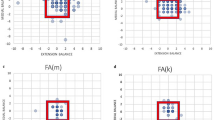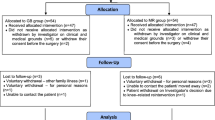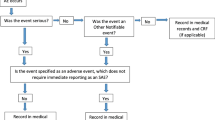Abstract
Purpose
Key concepts in total knee arthroplasty include restoration of limb alignment and soft-tissue balance. Although differences in balance have been reported amongst mechanical alignment (MA), kinematic alignment (KA) and functional alignment (FA) techniques, it remains unclear whether there are differences in gap imbalance or resection thicknesses when comparing different constitutional alignment subgroups.
Methods
MA (measured resection technique), KA (matched resections technique) and FA (technique based on the restricted KA boundaries) were compared in 116 consecutive patients undergoing 137 robotic-assisted cruciate-retaining total knee arthroplasties. The primary outcome was the proportion of balanced gaps (differential laxities ≤ 2 mm) for extension, flexion, medial and lateral gap measurements. Manual pre-resection laxity measurements were obtained for MA and KA and manual post-resection measurements were obtained for FA in 10° and in 90° of knee flexion. Secondary outcomes were resection depths and implant alignment. All outcomes were analysed per constitutional coronal alignment and joint line obliquity subgroups.
Results
The proportions of balance in all four gap measurements were 54.7%, 66.4% and 96.5%, with MA, KA and FA, respectively. Across all constitutional alignment types, FA achieved the highest proportion of balance. MA resected the least amount of bone from the medial tibial plateau. KA had femoral components in most valgus and most internally rotated, tibial components in most varus and was the most bone-preserving for the posteromedial femoral condyle. FA had the most externally rotated femoral components and was most bone-preserving for the distal femoral resections.
Conclusion
The study shows that implant alignment to the mechanical axis or joint line anatomy (equal resections) alone does not guarantee a balanced total knee arthroplasty. FA resulted in the highest proportion of balanced knees across all analysed subgroups. Future research will consider whether one alignment philosophy leads to superior outcomes for different constitutional alignment subgroups.
Level of evidence
Level II.




Similar content being viewed by others
Data availability
De-indentified data that support the findings of this study are available on request from the corresponding author.
References
Akagi M, Oh M, Nonaka T, Tsujimoto H, Asano T, Hamanishi C (2004) An anteroposterior axis of the tibia for total knee arthroplasty. Clin Orthop Relat Res 420:213–219
Allom RJ, Wood JA, Chen DB, MacDessi SJ (2021) Tibiofemoral dynamic stressed gap laxities correlate with compartment load measurements in robotic arm-assisted total knee arthroplasty. Bone Jt Open 2:974–980
An VVG, Twiggs J, Leie M, Fritsch BA (2019) Kinematic alignment is bone and soft tissue preserving compared to mechanical alignment in total knee arthroplasty. Knee 26:466–476
Azukizawa M, Kuriyama S, Nakamura S, Nishitani K, Lyman S, Morita Y et al (2018) Intraoperative medial joint laxity in flexion decreases patient satisfaction after total knee arthroplasty. Arch Orthop Trauma Surg 138:1143–1150
Clark G, Steer R, Wood D (2023) Functional alignment achieves a more balanced total knee arthroplasty than either mechanical alignment or kinematic alignment prior to soft tissue releases. Knee Surg Sports Traumatol Arthrosc 31(4):1420–1426
Clark GW, Esposito I, Wood D (2022) Individualized functional knee alignment in total knee arthroplasty: a robotic-assisted technique. Tech Orthop 37:185–191
Deep K (2014) Collateral ligament laxity in knees: what is normal? Clin Orthop Relat Res 472:3426–3431
Foge DA, Baldini TH, Hellwinkel JE, Hogan CA, Dayton MR (2019) The role of complete posterior cruciate ligament release in flexion gap balancing for total knee arthroplasty. J Arthroplasty 34:S361–S365
Golladay GJ, Bradbury TL, Gordon AC, Fernandez-Madrid IJ, Krebs VE, Patel PD et al (2019) Are patients more satisfied with a balanced total knee arthroplasty? J Arthroplasty 34:S195–S200
Graichen H, Lekkreusuwan K, Eller K, Grau T, Hirschmann MT, Scior W (2022) A single type of varus knee does not exist: morphotyping and gap analysis in varus OA. Knee Surg Sports Traumatol Arthrosc 30:2600–2608
Gustke KA, Golladay GJ, Roche MW, Jerry GJ, Elson LC, Anderson CR (2014) Increased satisfaction after total knee replacement using sensor-guided technology. Bone Joint J 96-B:1333–1338
Howell SM, Hull ML (2012) Kinematic alignment in total knee arthroplasty. In: Scott WN, Insall JN (eds) Insall and Scott Surgery of the Knee. Elsevier, Philadelphia, PA, pp 1255–1268
Howell SM, Kuznik K, Hull ML, Siston RA (2008) Results of an initial experience with custom-fit positioning total knee arthroplasty in a series of 48 patients. Orthopedics 31:857–863
Insall J, Scott WN, Ranawat CS (1979) The total condylar knee prosthesis. A report of two hundred and twenty cases. J Bone Joint Surg Am 61:173–180
Jawhar A, Hutter K, Scharf HP (2016) Outcome in total knee arthroplasty with a medial-lateral balanced versus unbalanced gap. J Orthop Surg (Hong Kong) 24:298–301
Kayani B, Konan S, Horriat S, Ibrahim MS, Haddad FS (2019) Posterior cruciate ligament resection in total knee arthroplasty: the effect on flexion-extension gaps, mediolateral laxity, and fixed flexion deformity. Bone Joint J 101-B:1230–1237
Lustig S, Sappey-Marinier E, Fary C, Servien E, Parratte S, Batailler C (2021) Personalized alignment in total knee arthroplasty: current concepts. SICOT J 7:19
MacDessi SJ, Allom RJ, Griffiths-Jones W, Chen DB, Wood JA, Bellemans J (2022) The importance of joint line obliquity: a radiological analysis of restricted boundaries in normal knee phenotypes to inform surgical decision making in kinematically aligned total knee arthroplasty. Knee Surg Sports Traumatol Arthrosc 30:2931–2940
MacDessi SJ, Griffiths-Jones W, Harris IA, Bellemans J, Chen DB (2021) Coronal plane alignment of the knee (CPAK) classification. Bone Joint J 103-B:329–337
MacDessi SJ, Oussedik S, Abdel MP, Victor J, Pagnano MW, Haddad FS (2023) The language of knee alignment : updated definitions and considerations for reporting outcomes in total knee arthroplasty. Bone Joint J 105-B:102–108
Marques Luis N, Varatojo R (2021) Radiological assessment of lower limb alignment. EFORT Open Rev 6:487–494
McEwen P, Balendra G, Doma K (2019) Medial and lateral gap laxity differential in computer-assisted kinematic total knee arthroplasty. Bone Joint J 101-B:331–339
Nowakowski AM, Majewski M, Muller-Gerbl M, Valderrabano V (2012) Measurement of knee joint gaps without bone resection: “physiologic” extension and flexion gaps in total knee arthroplasty are asymmetric and unequal and anterior and posterior cruciate ligament resections produce different gap changes. J Orthop Res 30:522–527
Okazaki K, Miura H, Matsuda S, Takeuchi N, Mawatari T, Hashizume M et al (2006) Asymmetry of mediolateral laxity of the normal knee. J Orthop Sci 11:264–266
Oussedik S, Abdel MP, Victor J, Pagnano MW, Haddad FS (2020) Alignment in total knee arthroplasty. Bone Joint J 102-B:276–279
Pagan CA, Karasavvidis T, Lebrun DG, Jang SJ, MacDessi SJ, Vigdorchik JM (2023) Geographic variation in knee phenotypes based on the Coronal plane alignment of the knee classification: a systematic review. J Arthroplasty. https://doi.org/10.1016/j.arth.2023.03.047
Pathak SK, Sethi M, Salunke AA, Thivari P, Gautam RK, Anjum R et al (2021) Is flexion gap rectangular in native Indian knees? Results of an MRI study. Indian J Orthop 55:1127–1134
Roth JD, Howell SM, Hull ML (2015) Native knee laxities at 0 degrees, 45 degrees, and 90 degrees of flexion and their relationship to the goal of the gap-balancing alignment method of total knee arthroplasty. J Bone Joint Surg Am 97:1678–1684
Schelker BL, Moret CS, Sava MP, von Eisenhart-Rothe R, Graichen H, Arnold MP, Leclercq V, Hirschmann MT (2023) The impact of different alignment strategies on bone cuts in total knee arthroplasty for varus knee phenotypes. Knee Surg Sports Traumatol Arthrosc 31:1840–1850
Schelker BL, Moret CS, von Eisenhart-Rothe R, Graichen H, Arnold MP, Leclercq V, Huegli RW, Hirschmann MT (2023) The impact of different alignment strategies on bone cuts for neutral knee phenotypes in total knee arthroplasty. Knee Surg Sports Traumatol Arthrosc 31:1267–1275
Schnaser E, Lee YY, Boettner F, Gonzalez Della Valle A (2015) The position of the patella and extensor mechanism affects intraoperative compartmental loads during total knee arthroplasty: a pilot study using intraoperative sensing to guide soft tissue balance. J Arthroplasty 30:1348–1353
Shatrov J, Batailler C, Sappey-Marinier E, Gunst S, Servien E, Lustig S (2022) Kinematic alignment fails to achieve balancing in 50% of varus knees and resects more bone compared to functional alignment. Knee Surg Sports Traumatol Arthrosc 30:2991–2999
Shatrov J, Battelier C, Sappey-Marinier E, Gunst S, Servien E, Lustig S (2022) Functional alignment philosophy in total knee arthroplasty: rationale and technique for the varus morphotype using a CT based robotic platform and individualized planning. SICOT J 8:11
Siddiqi A, White PB, Kaplin L, Bono JV, Talmo CT (2018) Effects of coronal limb alignment and ligament balance on pain and satisfaction following total knee arthroplasty at short-term follow up. Surg Technol Int 33:271–276
Tokuhara Y, Kadoya Y, Nakagawa S, Kobayashi A, Takaoka K (2004) The flexion gap in normal knees. An MRI study. J Bone Joint Surg Br 86:1133–1136
Tsukiyama H, Kuriyama S, Kobayashi M, Nakamura S, Furu M, Ito H et al (2017) Medial rather than lateral knee instability correlates with inferior patient satisfaction and knee function after total knee arthroplasty. Knee 24:1478–1484
Vajapey SP, Pettit RJ, Li M, Chen AF, Spitzer AI, Glassman AH (2020) Risk factors for mid-flexion instability after total knee arthroplasty: a systematic review. J Arthroplasty 35:3046–3054
Wakelin EA, Shalhoub S, Lawrence JM, Keggi JM, DeClaire JH, Randall AL et al (2022) Improved total knee arthroplasty pain outcome when joint gap targets are achieved throughout flexion. Knee Surg Sports Traumatol Arthrosc 30:939–947
Winnock de Grave P, Luyckx T, Claeys K, Tampere T, Kellens J, Muller J et al (2022) Higher satisfaction after total knee arthroplasty using restricted inverse kinematic alignment compared to adjusted mechanical alignment. Knee Surg Sports Traumatol Arthrosc 30:488–499
Acknowledgements
We would like to express our gratitude to Christina Esposito for her contributions to the final manuscript, which enhanced the quality and clarity of our work.
Funding
No funding was received for this study.
Author information
Authors and Affiliations
Contributions
All authors contributed to the study conception and design. Material preparation, data collection and analysis were performed by [VAG, DBC, RJA, JAW and SJM]. The first draft of the manuscript was written by [VAG and SJM] and all authors commented on previous versions of the manuscript. All authors read and approved the final manuscript.
Corresponding author
Ethics declarations
Conflict of interest
SM and DC report receiving research support (Stryker, Smith & Nephew, Zimmer Biomet (Research fellowship funding); Ramsay Hospital Research Fund (support for unrelated study), reimbursement for presentations (Stryker, Smith and Nephew) and paid consultations (Stryker, Amplitude SAS).
Ethical approval
Ethics approval was provided by Ramsay Health Care Research Ethics and Governance (2023/ETH/0029).
Informed consent
Informed consent was obtained from all individual participants included in the study.
Additional information
Publisher's Note
Springer Nature remains neutral with regard to jurisdictional claims in published maps and institutional affiliations.
Supplementary Information
Below is the link to the electronic supplementary material.
Rights and permissions
Springer Nature or its licensor (e.g. a society or other partner) holds exclusive rights to this article under a publishing agreement with the author(s) or other rightsholder(s); author self-archiving of the accepted manuscript version of this article is solely governed by the terms of such publishing agreement and applicable law.
About this article
Cite this article
Van de Graaf, V.A., Chen, D.B., Allom, R.J. et al. Functional alignment in total knee arthroplasty best achieves balanced gaps and minimal bone resections: an analysis comparing mechanical, kinematic and functional alignment strategies. Knee Surg Sports Traumatol Arthrosc 31, 5118–5127 (2023). https://doi.org/10.1007/s00167-023-07567-w
Received:
Accepted:
Published:
Issue Date:
DOI: https://doi.org/10.1007/s00167-023-07567-w




